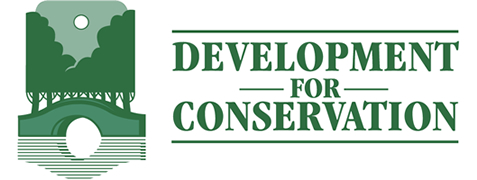
22 Sep Anchor Asks and Donor Upgrading
16 September 2025
By David Allen, Development for Conservation
I recently had a donor experience where the donor we were hoping would make a leadership pledge close to $500,000 pre-empted our request with outright gift of $40,000. On the one hand, every gift counts and every gift makes a difference. Plus – $40,000 is no trivial amount! On the other hand, it was hard not to feel disappointed.
The failure was ours, of course. We had several opportunities to let them know what we were looking for, and we let them pass without asking. In technical terms, we had failed to set an anchor.
When you ask a donor to consider a specific amount of money, that amount is called the “anchor.” Ultimately, you are asking them to play a specific role for you in raising the eventual target amount. The LEAD gift donor sets the bar for everyone else, but people up and down the pyramid are measuring their gifts against what others have given what you have asked them to consider. The higher the bars they see, the more likely they are to consider a larger gift.
In nearly every circumstance. it is important that you are the one to set the anchor. If we had asked our donors to consider a pledge of $500,000, we might not have gotten it, of course, but we would have improved our chances of getting $250,000 or even $100,000. When we failed to give the donors a clue, they chose an amount that seemed right to them given their relationship with the land trust.
This psychological phenomena shows itself in every aspect of our fundraising, from direct mail appeal letters to capital campaign solicitation requests. When we ask for a specific amount of money, we raise more money.
Plus, donors tend to get “stuck.” They begin to see us as the $100 organization, even while feeling completely comfortable writing $10,000 checks to other organizations.
The remainder of this post is from a post I wrote in 2019 about donors getting stuck in the way they see land conservation among their personal priorities. It’s NOT about how much money they have. It’s about how they see and relate to the organization. I encourage you to read Ellinger’s blog post that I reference in my article, and then mine, and then apply as much as you can this Fall. You will end up raising more money
BLOG Post Ask Strings and Donor Upgrading
By David Allen, first published 7/9/2019
If you accept the premise that fundraising through the mail, email, or phone is a science – a behavioral science – then you should be reading a blog called The Agitator. It is written by scientists about the science of direct marketing techniques used to help nonprofits raise more money.
One recent installment – The Donor Upgrade Conundrum – was about ask strings, and it’s worth a read even if you don’t end up subscribing.
After some trial-and-error experimentation, the ask string I use most often for renewals consists of five options, beginning with the amount they gave last year. This amount is called the “anchor.”
The second from the least is the amount I have specifically asked for in the letter. There are two options more than what I asked for, and then “Other.” The “Other” is always placed so that it implies “more than the largest amount” instead of “less than what they gave last year.” The options are ranked in order from left to right.
For example: ___$50 ___$100 ___$250 ___$500 ___Other
The ask string I have used with some success for the first letter in a sequence of letters, either for renewals or appeals, consists of just the ask amount and “Other.” This has worked particularly well with donors who have only ever given small amounts of money and who I am asking for $100. I get fewer responses but a significant increase in the amount of money.
For example: ___$100 ___Other
And I have seen the same problems of donors getting “stuck” that Ellinger points out in the blog post. Donors begin to see us as one of their $35 organizations, or $100 organizations, or $250 organizations. They give this same amount every year regardless of the letter specifics.
Getting them unstuck without losing them altogether can be a challenge. (I like Donor Clubs for this purpose, but that’s another topic.)
One thing I can tell you for sure: Using a pre-printed response card that is the same for everyone is NOT the answer. Almost any mechanism that produces variable ask strings will increase response rates, average gifts, total money, or potentially all three.
Ellinger’s research suggests that basing the “anchor” amount on their average gift in the recent past is better than basing it on their most recent gift amount. And most recent is better than “highest.” He has an excellent white paper on the topic that I have only skimmed to this point. It is available as a free download from The Agitator post I referred to above.
Cheers, and have a great week!
-da
PS: Your comments on these posts are welcomed and warmly requested. If you have not posted a comment before, or if you are using a new email address, please know that there may be a delay in seeing your posted comment. That’s my SPAM defense at work. I approve all comments as soon as I am able during the day.



Sorry, the comment form is closed at this time.